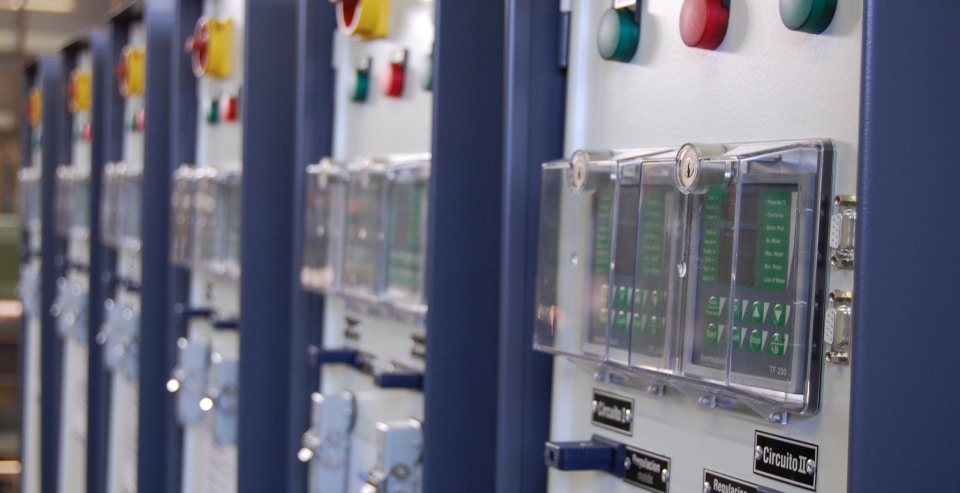Overview and Introduction to Temperature Control Devices
To give you a better overview of our products, as well as temperature control devices in general, we have summarized some points that we consider important for you. If you are not yet familiar with how a temperature control device works or are still unsure which one is right for you, we hope to explain the functionality and possible conditions of a temperature control device in more detail here.
Basics and Applications of Temperature Control Devices
A temperature control device, also known by the somewhat outdated term heating-cooling device, can be used wherever a consumer needs to be regulated and maintained at a specific temperature via a heat transfer medium or to reach different temperature levels cyclically through cascade control. Consumers in the field of temperature control include, among others, die casting or injection molding molds, dies, calenders, or rollers. These are found in industries such as die casting, injection molding, pharmaceuticals, chemicals, or food. There are also many specialized applications where a temperature control device can be used to achieve the necessary and continuous quality standard of the produced products.
Important Prerequisites for Operating Temperature Control Devices
For a temperature control device to operate correctly, some basic conditions must be met at the consumer. An important component is the temperature control channel bores within the consumer. These should be free from any contamination, such as deposits from corrosion products or scale. Care must be taken to avoid the creation of so-called dead zones when introducing the temperature control channel bores into the consumer, as heat transfer can hardly occur in these zones due to the lack of flow velocity of the medium between the medium and the consumer. Additionally, contaminants often accumulate in these areas, which can re-enter the system during possible leak stop operations, medium suction, or process disruptions. In the worst case, this can lead to a failure of the temperature control device. Furthermore, the connections between the temperature control device and the consumer must be absolutely tight, insulated, and secured against self-loosening. The connections must always be designed for at least the maximum temperature and pressure range of the temperature control device.
Necessity of Filtration Systems to Prevent Damage
To avoid damage to the temperature control device, the use of a filtration system is essential. Depending on the operating mode of the temperature control device, filtration of the medium is necessary both in the supply and return lines. Common components in a temperature control circuit, besides the medium, include corrosion residues, residues caused by the manufacturing of the consumer such as metal shavings, sand, and also cracking products from aged or incorrect oil. This often leads to increased pump wear or even pump failure in the temperature control device.
Optimization of Heat Exchange through Suitable Temperature Control Media and Systems
The heat exchange between the temperature control device and the consumer occurs via a heat transfer medium. The heat transfer medium is electrically heated to the specified temperature in the temperature control device via tubular heaters and continuously circulated to the consumer. The performance of the tubular heaters can be selected in different stages specific to the application. The temperature of the heat transfer medium can be reduced through different systems. A distinction is made between direct and indirect cooling. Indirect cooling, depending on the type of temperature control device, occurs via cooling coils or plate heat exchangers, which can be switched directly or in bypass.
System Control and Process Adjustments
The temperature control device directly detects machine downtime and the resulting heat losses and compensates for them. This ensures that production can be resumed immediately after unforeseen downtimes. Another method of temperature control is regulation via flow rate. In this case, the flow rate of the individual temperature control circuits is continuously monitored. Based on these values, the control system determines the energy demand of the temperature control circuits and adjusts the flow rate to the process via servo valves. Often, hand valves are used instead of servo valves in these applications. The advantage of hand valves is that, unlike servo valves, they are less prone to failure due to contaminated media. However, a significant disadvantage is that manual adjustment by the operator is always required, preventing dynamic process control. If the use of valves is generally to be avoided, flow control can also be achieved via frequency-controlled pumps.
Integration into Higher-Level Control Systems
In many cases, a temperature control device can also be operated via a higher-level machine control system. All parameters of the peripheral devices connected to a system, such as a casting cell, can then be centrally viewed, monitored, and controlled. This allows process data to be securely documented. Common interfaces such as OPC UA, Profinet, Profibus, etc., are available for this purpose.
